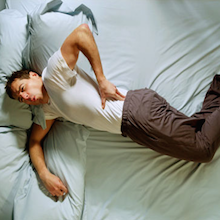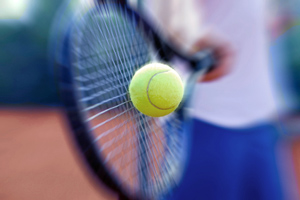The best-know injury when playing tennis is called tennis elbow. Also known as lateral epicondylitis because the lateral epicondyle is the attachment site of the extensor muscles of the wrist. (little finger side of the forearm) Gripping, swinging, and hitting tennis balls repetitively send forces through the wrist and forearm and the muscles become overused and inflamed (itis) due to micro ruptures and scar tissue. Pain and tenderness are felt in the forearm and can radiate into the wrist and fingers. Most motions involving the wrist or elbow will provoke pain.
There are a few different approaches for the treatment of tennis elbow. The level of pain experienced is the top indicator that tells you which direction to take. Rest, ice application, and stretching are the basis for proper recovery. In most cases brief immobilization of the injured areas is effective. Daily stretching of the forearm extensor muscles along with improving grip and overall forearm strength is key. Strengthening the core and upper body musculature is important for a successful recovery. It is important to maintain overall fitness during your rehabilitation period. Running or cycling 20-30 min/day is recommended. Swimming with a kickboard is also beneficial.
The return to the play phase should be pre-planned. Do not attempt to play matches as soon as you think you feel better. Slowly increasing the load to the forearm and elbow is the proper approach. Mini tennis advancing to baseline tennis on slow courts hitting forehands and two-handed backhands would be where you begin. Hitting flat with slice strokes and volleys would be next moving on to smashes and serves. Hitting with topspin during the early portion of the return to the play phase is not recommended. Pain levels tell you if you should rest or increase workload. Don’t attempt to do everything in one session.
The next area of focus is paying attention to timing and technique. Hitting the ball in front of the body using a straight wrist is the goal. Use your larger muscles to generate power. (core + shoulder) Use your forearm more for control of your shots.
William Tyner, Athletic Trainer



